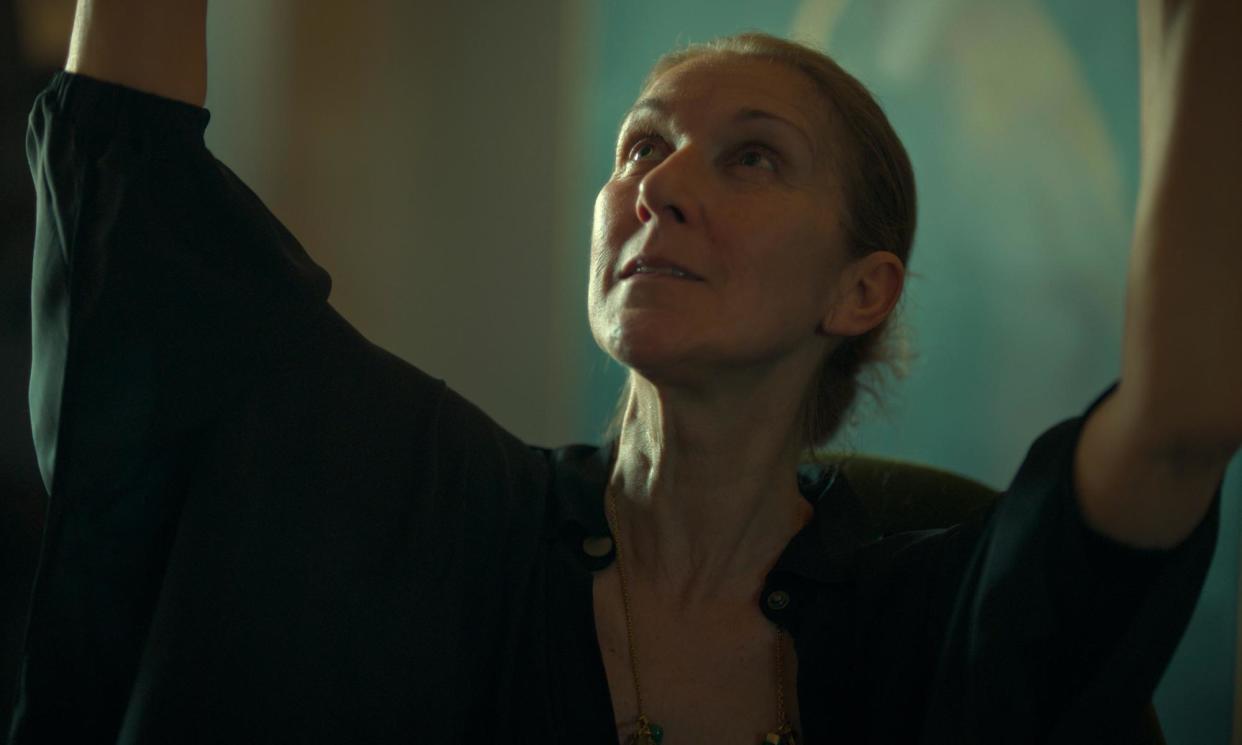I Am: Céline Dion review – an earnest love letter from one of the last true divas

Minutes into I Am: Céline Dion, the beloved singer’s remarkably unguarded documentary chronicling her struggle with a rare neurological disorder, the queen of power ballads is on the floor, in fetal position, surrounded by staff. Someone has called 911. Someone asks if she is in pain, to which she can only moan. The scene is fleeting, scary and succinct – when Dion says that life with stiff-person syndrome has been difficult, she means it.
Related: Céline Dion says illness has caused muscle spasms that broke her ribs
Like her music, which has cut through the emotional defenses of millions across languages, I Am: Céline Dion is unabashedly sentimental, deeply earnest and, for a true pop diva, mostly devoid of ego, with a few exceptions. (I would watch an hour more of her touring her massive Vegas warehouse of clothes.) And it toggles between great poles of volume, as director Irene Taylor collages archival performance footage from a 30-plus year career with Dion’s new reality of convalescence. High note after high note on stage, nearly blowing out the microphone at a 90s recording session, cuts to Dion shuffling around her Vegas home with her aging Labrador.
For much of the film, Dion appears in mourning for her calling. She eschews makeup, hair dye, star accoutrements (massive house and staff aside), opting instead for a simple white shirt, unfussy bun, and uncut longing to return to the stage. And still, she slips into sing-talking at one of her sons off camera. Rest assured – Céline may have taken time off, but she is still Céline: animated, forthright, a true-blue entertainer and a genuine weirdo.
Early on, the film, cuts to “one year earlier” – from what, it’s not exactly clear – to the period between when she canceled her highly anticipated 2021 Vegas residency, citing unspecific health reasons, and the public announcement of her diagnosis in December 2022. The timeline for Taylor’s filming of her recovery, so to speak – stiff-person syndrome (SPS) has no cure, and Dion reveals that she’s been managing symptoms, sometimes with a near-lethal amount of Valium, for almost 20 years – is somewhat murky. SPS causes muscle stiffness and sometimes full spasms, the brain’s misguided response to overstimulation via loud sound and stress – a particularly cruel fate for a woman so attuned to the power of emotions, so eager to summon bombastic sentiment, that she named her company, a co-producer on the film, Feeling Productions.
At the film’s New York premiere, which marked Dion’s first red carpet since the announcement of her diagnosis, Taylor revealed that the singer’s only request for the project was that it not be others talking about her; she would talk about herself. (Dion, ever true to form, took about 10 minutes to say a few words thanking Taylor, her neurologist and her children, owing to profuse cheers and extremely dramatic pauses.) And talk she does – about her family, about her shoes, about her voice, the “conductor” of her life, now held in a straitjacket by disease; with SPS, she can no longer breathe enough air to hit the high notes, which she demonstrates to tears from herself and, surely, some viewers. And above all, about her deep love of performing for her fans. All pop stars must profess this, yet Dion feels achingly, heartbreakingly sincere.
Pop star documentaries tend to be judged along these lines of perceived authenticity: what moments pull back the curtain on show business, what new message to fans cuts through the curation of the old. Perhaps the reason Dion’s film feels more refreshing than most – and there are many, mostly grappling with celebrity and the pressure of the public eye – is that she is an older, different breed of celebrity. If she has reservations about fame, she doesn’t show it. She loves being an entertainer. Her voice was a gift she cherishes and loves to share, as underscored by the footage of her rehabilitation to regain it and her past comfort on stage, which Taylor stitches together in quick patchwork, occasionally undercutting the poignancy of both.
The clipped pace gives the sense of a veil, an opacity on the worst of stiff-person syndrome versus the toll. That is, until the film’s most stark and shocking scene of her condition – a full, unvarnished, nearly ten-minute recording of a spasm, saved for the very end. The episode is triggered by what seems like the film’s note of redemption, after a hard-fought win in the recording booth. At the risk of being cliche, I could only think of the word brave while watching an international superstar consent, via grunt, to be filmed completely out of control of her body as the spasms immobilize her – her safety managed by a team of specialists, her hands mangled into claws, her face frozen in grimace, glistening with tears.
Dion has said she is training to perform again; the film’s structure leaves such a happy ending as yet unrealized, triumph not yet outwitting tragedy. But it gives little reason to doubt her, let alone her tenacity or bone-deep desire to hit the notes again. Hours after the spasm, she parts with her sports medicine specialist with a goodbye song played via phone. Dion hums along, first reservedly, then upright, then standing and fist-pumping, amping up an invisible crowd, still singing.
I Am: Céline Dion is available on Prime Video on 25 June
